- Home
- Michael Connelly
Crime Beat Page 2
Crime Beat Read online
Page 2
He told me the four people dead were a mother and her three young children, all of them shot in the head, all of them in the same bed. He shook his head as if not comprehending the crime. I asked if there was any evidence pointing to who did such a horrible thing.
He nodded.
“Yeah,” he said. “She did it. The mother. She killed everybody and left a note.”
He then had to walk away from me and I think I saw him wipe a tear out of his eye. And I understood in that moment some of the difficulty, danger and nobility of the job. And I knew I had something more to give Harry Bosch.
PART ONE
THE COPS
THE CALL
LAUDERDALE HOMICIDE
Mayhem and ennui set the tone for a week spent in the forefront of the battle against a city’s murders.
SOUTH FLORIDA SUN-SENTINEL
October 25, 1987
IT HAS BEEN FOUR DAYS since anybody has heard from or seen Walter Moody and people are thinking that something is wrong. The tenants at the South Andrews Avenue apartment building he manages say he hasn’t answered his door since Thursday. His parents can’t get him on the phone. And he didn’t call his boss Saturday when he didn’t show up for his part-time truck-driving job.
This is not like Walter, everyone agrees.
It is now 1:40 p.m., Monday, June 29. The happenstance of concern from so many places for Walter Moody results in two Fort Lauderdale police officers and a locksmith coming to his apartment door. There is a small crowd of tenants watching closely.
The three-story apartment building has a Spanish castle motif: white walls, red barrel-tile roof, round turret with small arched windows at the corner. It is a U-shaped building with a neatly kept center courtyard dominated by a shade tree reaching all the way to the roof. There are small bushes and shrubs about the courtyard, all trimmed and cared for by the manager, Walter Moody. The tenants sit on a bench beneath the shade tree and look up to the second-floor walkway where the locksmith has just opened the door to Walter’s apartment. The officers go in and find the place ransacked and the door to the master bedroom locked. They call for the locksmith to open it. And after a few moments inside, they call for the homicide squad.
GEORGE HURT has gone home early. His sinuses are acting up and the last few days have been slow. He figures he can take the break. He is sitting on the couch and has the afternoon paper in his hands when he gets The Call.
It’s another murder. An apartment manager. No smoking gun. No such luck.
He is told where. He is told when. The how is not yet known. It is Detective Vicki Russo telling him this. She’s rolling on it, she says. And so are the others—they being all available members of the homicide squad. George Hurt, sergeant in charge of the squad, says he’s rolling too. A routine week in homicide has begun. Hurt hangs up and curses to himself. This is number 38.
Murder in Fort Lauderdale comes in all ways, times, places and circumstances. It is a crime unclassifiable in any way other than by its final result, the taking of life. For George Hurt and the homicide squad the only sure bet is that it comes and comes. This is Monday, June 29, and already there have been 38 homicides this year. There were 42 in all of 1986. The most ever was 52, back in 1981. At this rate, George Hurt is thinking he is going to need another case chart for the wall in the squad room. There could be 60 to 70 murders in Fort Lauderdale this year. That’s kind of scary. And that’s why he curses each time he gets The Call.
It is hard to account for the numbers. Economics, drugs, heat, full moons, whatever. Hurt’s squad has investigated three people shot to death in a fast-food restaurant during a Saturday morning robbery; a high-profile divorce lawyer murdered a few steps from his office elevator; a rock-and-roll singer beaten to death because he was gay. More than a dozen times the victim was either the buyer or seller of drugs when things went wrong. There have been the quiet cases that rated only a few paragraphs in the newspapers, and the big cases that drew the TV trucks with the microwave dishes.
It all adds up to 37 times in six months that the squad has assembled at a scene that defied common sensibilities, the Norman Rockwell portrait of life. And now it is time to gather again. Number 38, Walter Moody, lies cold in bed, his blood four days old on the sheets and pillows, waiting for the homicide squad.
“SMELL THAT?” says George Hurt. “They just rolled the body over in there.”
Capt. Al Van Zandt, a supervisor of the detective division, puffs on his cigar so the smell of tobacco will overcome the sickly smell of death.
The two of them are standing outside the door to Walter Moody’s apartment. Hurt didn’t have to be inside to know what the smell is; he has had years of experience with it. Going back to his stint as head of the department’s forensic unit before coming to homicide, and even back 20 years to Vietnam, he says that it seems much of his life has been spent rolling bodies over.
This time he stays mostly outside the apartment with Van Zandt, content to let the forensic investigators and the assistant medical examiner do the work inside.
There are five homicide detectives working the first hours of the Walter Moody case. One of the first to arrive was Phil Mundy, the squad’s senior detective. But after surveying the murder scene and discerning that it was a “whodunit” as opposed to a “smoking gun” case, Mundy returned to the bureau to run record searches on Moody and to coordinate requests that would come from detectives at the scene. His partner, Pete Melwid, is still at the apartment building questioning tenants. So are detectives Mike Walley, Gary Ciani and Vicki Russo. Russo’s partner, Kevin Allen, is on the way, called in from a day off. When was Walter last seen? Who were his friends? Who were his enemies? These are the questions the detectives are asking. In the early stages of a case, information is the only available tool.
There is a basic rule to murder investigation; as more time elapses in a case, the chances of solving it grow slimmer. So whenever possible, depending on constrictions of time, the overtime budget, fatigue and so on, Hurt puts all available hands on the initial stages of a case. “It’s called trying to figure out what is what and going from there,” he says.
The squad has a rotation system for assigning cases to lead detectives. This time partners Russo and Allen are “up.” They will be responsible for the case from start to finish. If it is not solved by the group effort in the next few hours, it will be theirs to work alone.
“I haven’t had a smoking gun yet this year,” Russo says as she starts compiling information in a notebook. “For once, I’d like a gimme—to come in and there would be a victim and over there would be the suspect.”
But it hasn’t been that way for Russo or the rest of the squad for most of this year.
WHILE THE HOMICIDE detectives corral and question the tenants and the owner of the apartment building, three forensic investigators are inside the apartment looking for fingerprints, photographing and gathering evidence. Dr. Felipe Dominguez, assistant medical examiner, is in the bedroom with the body.
Moody lies faceup on his bed and almost looks as if he is asleep. Almost but not quite. There is a stab wound on his forearm, other cuts, but it is obvious that none were fatal. And there is blood on the sheets and pillow, but the odor of death is not noticeable to anyone without Hurt’s nose for it. The killer had left on the air conditioner, slowing decomposition.
The phone in the apartment rings but the detectives don’t answer it because there is blood on it and possible fingerprints. After several rings, a tape recording of Walter’s voice comes on asking the caller to leave a message. He’ll get back to them. The caller is Walter’s mother. She is hysterical and wondering what is going on.
“Please, will someone call us as soon as you know what is happening,” she pleads after the beep. A detective borrows a phone in another apartment to call.
The detectives interviewing the tenants have come up with three potential avenues of investigation: Walter evicted people from the apartment. Walter was set to be a witness i
n an upcoming robbery trial. And Walter frequently allowed young men to stay in his apartment in exchange for work around the building.
Working from experience, the detectives pick the third version as the best place to start. And the tenants have provided a description of a young man named Troy who was seen around the apartment as late as Friday afternoon. Let’s try to find this Troy, the detectives decide.
Dr. Dominguez is leaving the apartment now and tells Hurt the body is ready to be moved to the medical examiner’s office for autopsy. Hurt wants to know the cause of death.
“Knife wound in the back, between the shoulder blades,” Dominguez says.
“Big knife? Little knife?”
“Big knife,” Dominguez says. “Kitchen knife.”
THREE MEN PULL UP to the apartment building in a white van and unload a stretcher. They are the body movers, from a company called Professional. All three are wearing suits and ties, the top buttons on their shirts fastened. They are easily the best-dressed people on the scene. They move in a solemn single file into Walter Moody’s apartment to take him on his last trip out.
As they do this, the crime scene begins breaking up. The detectives are heading off in different directions; Melwid to a fast-food restaurant to follow a lead on Troy, Ciani and Walley back to the bureau with three tenants who will help make a composite drawing of the suspect. Van Zandt also heads back. Hurt, Russo and Allen are tying up the last details at the scene before leaving. And inside the apartment, the crime scene technicians are going to take a dinner break. They will have to come back to the apartment later to begin a meticulous and long search into the night for evidence and clues.
When Walter Moody comes out of his apartment for the last time, one tenant is still standing under a shade tree, watching and sipping a beer. Moody is beneath a white sheet. Two of the Professionals—one now has blood on the sleeve and pants of his light blue suit—are straining under the weight of the stretcher, their heels shuffling on the concrete. Once down the stairs, the body is gently placed on a wheeled stretcher and covered with a green velvet blanket. It is then wheeled to the white van. One of the body movers has blue tears tattooed at the corners of his eyes. Somehow it seems appropriate. The people here can’t let true sympathy get too much in the way of the work.
At 7 p.m. the yellow plastic barricade tape police had strung across the entrance of the apartment building is taken down. The white van pulls away. The last of the police officers leave the scene. On the walkway outside the murder victim’s apartment, the cops have left five empty coffee cups behind. And there are 36 cigarette butts crushed on the cement or dropped in the wood chips spread around the shrubs that Walter Moody had once planted and cared for.
IT IS NEARLY 9 P.M. before the detectives are finished getting a composite of Troy from the witnesses and turning over the collected information to Russo and Allen, the case detectives.
Russo and Allen have several leads. First to check is a name that Mundy came up with on the police computer. It is a person being held in the county jail who gave Walter Moody’s address as his own. It might be a former roommate and someone who may know Troy. As Hurt and the other detectives head home for the night, Russo and Allen decide to head to the jail to interview the prisoner. Russo first calls her daughter to say she won’t be home until late.
At home, George Hurt watches the first half of a New York Mets and St. Louis Cardinals baseball game on TV before falling asleep. But at 12:30 a.m. he is yanked out of it by the phone. The Call. Fifteen minutes later he is at 600 Southwest 12th Avenue, the corner of Riverside Park, looking at the facedown body of a man with a bullet hole in his back. Number 39.
Walley and Ciani are also there, the partners who are up on the rotation. Van Zandt is there, cigar in hand, as well as Dominguez and the crime scene detectives. Somebody asks if anybody knows if the Mets won. Somebody else starts an electric generator and a spotlight bathes the body in a harsh white light. Above the grim proceedings the detectives can see storm clouds forming. It will rain soon. They hurry.
The detectives begin talking to witnesses and the two men who had been with the dead man when he was alive just minutes before. They get an idea of what happened.
Michael Connable, 31, was walking with two friends down Sixth Street toward the Riverside Pub. It was midnight dark, and a second group of three men were approaching from the opposite way. As the two groups passed, one of the men from Group Two opened fire. The men of Group One began running. Fifty yards later Connable fell dead a few feet from the door of the Riverside Pub, his blood slowly seeping down an incline on the parking lot toward a storm drain.
Group One did not know Group Two. Group One did not say anything to Group Two. Group One consisted of three gay white men. Group Two consisted of three black men. What did it all mean? What was the motive? Was it random violence? Was it racial? Was it because the men in Group One were gay? In the silence and the darkness, how could the shooter even have known that?
By the time the body movers from Professional arrive—the same three who came for Walter Moody—the detectives know they have the kind of case that will take a lot of work on the street.
“The only thing we can do is hope to find a snitch,” says Walley.
In the last 12 hours, Hurt and his squad have gone zero for two. They’ve got two whodunits and few clues to the perpetrators. Hurt says he could sure use a smoking gun case. He could also use some sleep.
It starts to rain as Connable is put on the stretcher and carried to the waiting van. The detectives split up and go home. Connable’s blood starts to wash down the storm drain. And raindrops fall on the face of the body mover with the tattooed tears.
ON THE WALL in George Hurt’s office is a sign that says, “Get off your ass and knock on doors.” It might have been made with a salesman in mind, but the slogan is a creed for the homicide detective as well.
Outside his office, the squad room is a quiet place during the days following the Moody and Connable slayings. No murders occur, but the detectives are out on the street, knocking on doors.
Tuesday is autopsy day. But in these cases the autopsies will not provide information critical to solving the cases. So Walley and Ciani and Russo and Allen get the cause of death details on Connable and Moody by phone. There is no need to stand in the tiled room and watch the post-mortem procedures like they do on the TV cop shows.
WHAT IS NEEDED is the almost always boring legwork they don’t show on TV. Walley and Ciani spend their time during the rest of the week looking for witnesses in the Connable case, knocking on doors in the Riverside neighborhood, talking to regulars at the Riverside Pub, and checking out the few phone tips that have come in. They are getting nowhere.
The detectives are also working informants, putting the word out into the netherworld network of people who sell street information that this case will bring up to $1,000 for the name of the shooter.
Working informants is one of the ironies of death investigation. Snitches are often criminals themselves; information is gathered on the street by those who work the street—drug dealers and thieves among them. Some wear beepers so they don’t miss calls from either customers or the cops. Cops despise them and need them at the same time. But the trouble at the moment is that this time nobody is calling with any information on the Michael Connable case.
“So far, we have nothing,” says Walley, a large man who seems more to hunker down over his desk in the squad room than to sit at it.
Russo and Allen are having similar difficulties. Their efforts to track down the missing Troy are getting them nowhere. The jail prisoner they talked to didn’t know any Troy, was no help at all. The fast-food worker named Troy that Melwid came up with can’t be located, and might not be the right one anyway. On his application form at the restaurant he put a phony address down. They have tips to three other men who might be their Troy but so far they’ve hit dead ends.
By Thursday, the only thing for sure about the week’s two cases is t
hat both are getting older and harder to solve.
GEORGE HURT is sitting at his desk, shaking his head. He has the reading glasses he usually wears while doing paperwork off and the tip of one of the earpieces clenched in his teeth. The plastic tip is grooved from being clenched there often. It is that kind of job.
Hurt has to shake his head because he is mildly amused, confused and annoyed. In the wake of the week’s two slayings he has sat back and watched and read about two occurrences that have left him perplexed. The Connable murder has resulted in a civic meeting between police officials and Riverside residents, and members of the gay community are airing fears that gays in the neighborhood are being targeted by gunmen. So far, the issue has played well in the newspapers and on TV, but the problem is that no one has checked with Hurt or the case detectives, Walley and Ciani, about it. And as far as they are concerned, such fears are unfounded.
“As far as we know at this point, sexual preference had nothing to do with it,” Hurt is saying. “We are looking at it as random violence. Some kid with a gun wanted to pop somebody. And he did.”
Hurt says the confusion on the case has been further compounded because the night before, one of the local TV news programs out of Miami showed a composite drawing of Troy from the Moody case and said it was the man police were seeking in the Connable shooting. Troy is a white man. The Connable suspect is black.
“Unbelievable, how it gets sometimes,” Hurt says.
SHORTLY BEFORE midnight on Thursday, July 2, Johnnie Eddines becomes number 40. Detectives Phil Mundy and Pete Melwid, along with Hurt, are called in from home.
But there is no murder scene to respond to this time. Eddines died in a hospital. He had been found in his car in the 600 block of Northwest 16th Avenue, bleeding from several bullet wounds. He was alive when medical rescuers got there and was transported to Broward General Medical Center. He made it no farther.

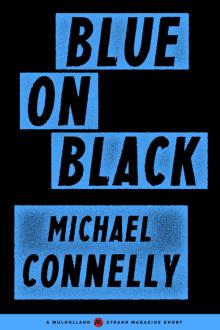 Blue on Black
Blue on Black The Black Ice (1993)
The Black Ice (1993) Crime Beat: A Decade of Covering Cops and Killers
Crime Beat: A Decade of Covering Cops and Killers Nine Dragons
Nine Dragons The Late Show
The Late Show City of Bones
City of Bones The Overlook
The Overlook The Crossing
The Crossing The Poet (1995)
The Poet (1995) Murder Worthy
Murder Worthy The Wrong Side of Goodbye
The Wrong Side of Goodbye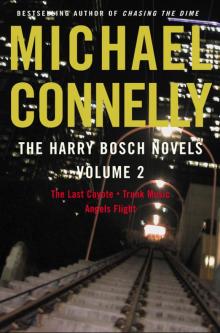 Harry Bosch Novels, The: Volume 2
Harry Bosch Novels, The: Volume 2 The Harry Bosch Novels
The Harry Bosch Novels The Gods of Guilt
The Gods of Guilt The Black Echo
The Black Echo The Reversal
The Reversal Two Kinds of Truth
Two Kinds of Truth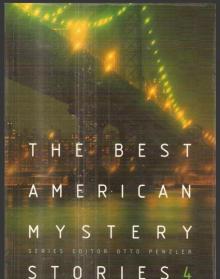 The Best American Mystery Stories 2003
The Best American Mystery Stories 2003 The Rag
The Rag The Brass Verdict
The Brass Verdict The Black Echo (1992)
The Black Echo (1992)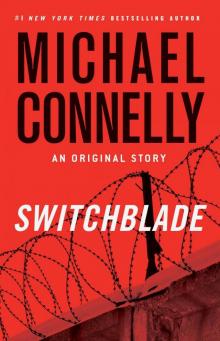 Switchblade
Switchblade The Last Coyote
The Last Coyote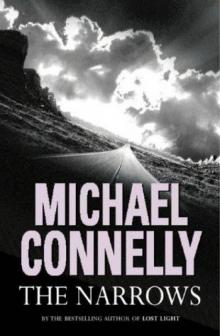 The Narrows
The Narrows The Concrete Blonde (1994)
The Concrete Blonde (1994) THE LINCOLN LAWYER (2005)
THE LINCOLN LAWYER (2005) The Safe Man: A Ghost Story
The Safe Man: A Ghost Story Angels Flight (1998)
Angels Flight (1998) Void Moon
Void Moon The Drop
The Drop Trunk Music
Trunk Music The Night Fire
The Night Fire The Black Ice
The Black Ice Chased Down
Chased Down The Closers
The Closers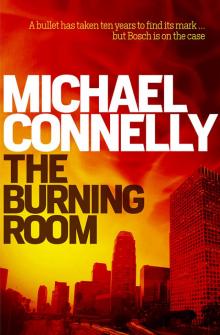 The Burning Room
The Burning Room Angels Flight
Angels Flight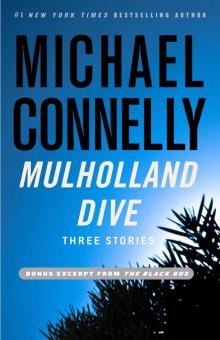 SSC (2012) Mulholland Drive
SSC (2012) Mulholland Drive Chasing the Dime
Chasing the Dime The Lincoln Lawyer
The Lincoln Lawyer Blood Work (1998)
Blood Work (1998) Echo Park
Echo Park A Darkness More Than Night
A Darkness More Than Night Dark Sacred Night - Ballard and Bosch #1;Renée Ballard #2
Dark Sacred Night - Ballard and Bosch #1;Renée Ballard #2 Lost Light
Lost Light The Scarecrow
The Scarecrow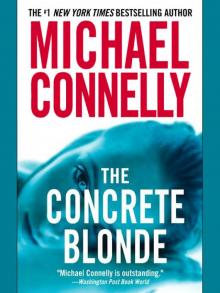 The Concrete Blonde
The Concrete Blonde Angle of Investigation
Angle of Investigation Suicide Run: Three Harry Bosch Stories
Suicide Run: Three Harry Bosch Stories The Law of Innocence
The Law of Innocence Murder in Vegas: New Crime Tales of Gambling and Desperation
Murder in Vegas: New Crime Tales of Gambling and Desperation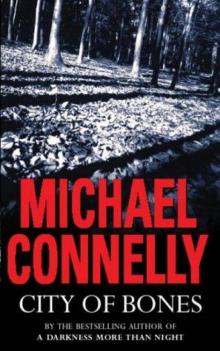 City Of Bones (2002)
City Of Bones (2002) Chasing the Dime (2002)
Chasing the Dime (2002) The Safe Man
The Safe Man Two Kinds of Truth (A Harry Bosch Novel)
Two Kinds of Truth (A Harry Bosch Novel)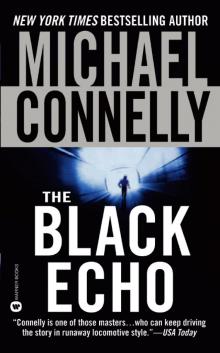 Harry Bosch 01 - The Black Echo
Harry Bosch 01 - The Black Echo Angle of Investigation: Three Harry Bosch Short Stories
Angle of Investigation: Three Harry Bosch Short Stories The Harry Bosch Novels Box Set 1
The Harry Bosch Novels Box Set 1 The Concrete Blonde hb-3
The Concrete Blonde hb-3 The Black Box hb-18
The Black Box hb-18 Short Stories
Short Stories The Black Ice hb-2
The Black Ice hb-2 The Last Coyote (1995)
The Last Coyote (1995) The Gods of Guilt mh-5
The Gods of Guilt mh-5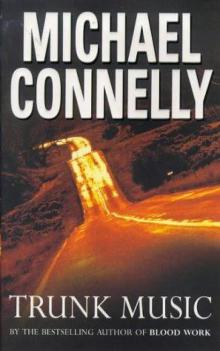 Trunk Music (1996)
Trunk Music (1996) Harry Bosch 02 - The Black Ice
Harry Bosch 02 - The Black Ice Dark Sacred Night
Dark Sacred Night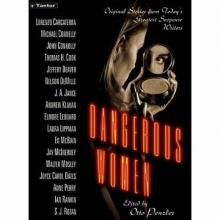 Cielo Azul
Cielo Azul 9 Dragons
9 Dragons The Narrows (2004)
The Narrows (2004) The Wrong Side of Goodbye (Harry Bosch Series)
The Wrong Side of Goodbye (Harry Bosch Series) In The Shadow Of The Master: Classic Tales by Edgar Allan Poe
In The Shadow Of The Master: Classic Tales by Edgar Allan Poe Void Moon (1999)
Void Moon (1999) Switchblade: An Original Story (harry bosch)
Switchblade: An Original Story (harry bosch) The Harry Bosch Novels, Volume 2
The Harry Bosch Novels, Volume 2 Switchblade: An Original Story
Switchblade: An Original Story The Closers (2005)
The Closers (2005) Crime Beat
Crime Beat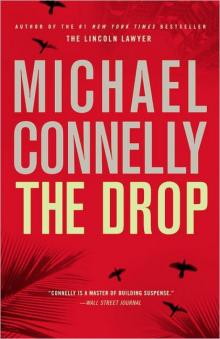 The Drop hb-17
The Drop hb-17 The Gods of Guilt (Mickey Haller 5)
The Gods of Guilt (Mickey Haller 5) Mulholland Dive: Three Stories
Mulholland Dive: Three Stories Lost Light (2003)
Lost Light (2003) Angle of Investigation: Three Harry Bosch Stories
Angle of Investigation: Three Harry Bosch Stories Blood Work
Blood Work The Fifth Witness: A Novel
The Fifth Witness: A Novel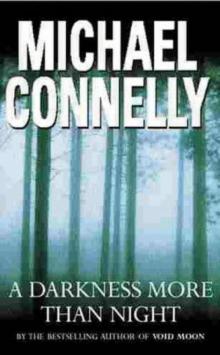 A Darkness More Than Night (2000)
A Darkness More Than Night (2000)